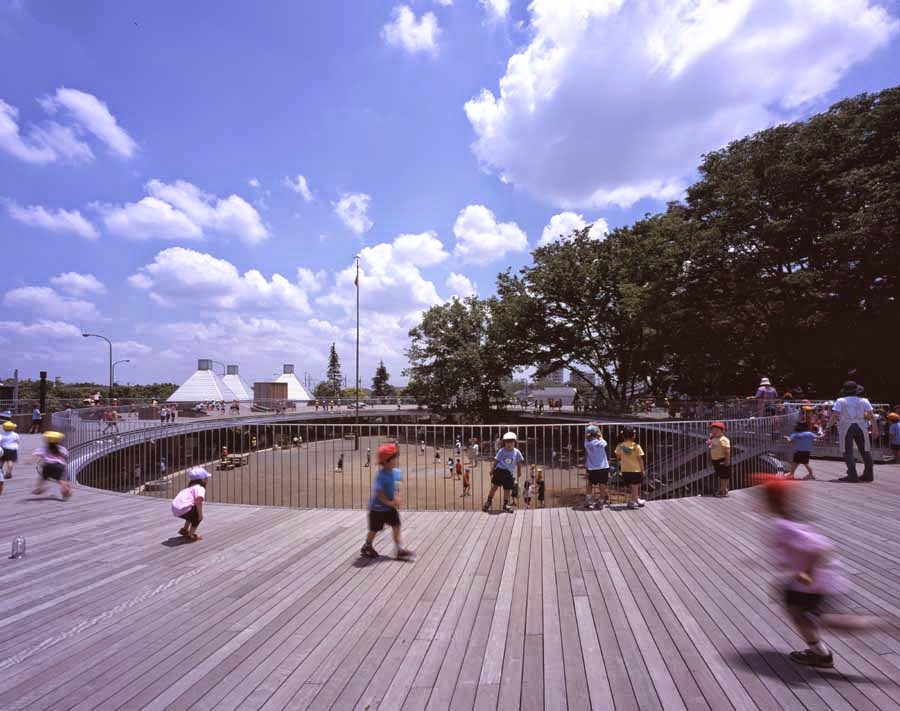“… if you are parents, you know that kids love to keep making circles,” states Tokyo-based architect, Takaharu Tezuka of the husband-and-wife team,Tezuka Architects, in a video of him speaking about his design at a 2014 TEDx event in Kyoto. This idea was therefore the inspiration behind his design for this revolutionary kindergarten building that not only allows kids to run free but teacesh them about life lessons.
“If you don’t know happiness, how can you provide it to others?” is the architects’ motto.
"Our architecture is about family — everything we learn, everything we do about architecture starts with our family," says Takaharu who have two young children.
Located in Tachikawa, western Tokyo, the 750-student, three-year preschool built in 2007 is a one-story structure in the shape of a donut.
For an adult, the traffic patterns on the ground floor, center courtyard and roof may look dizzying. However, studies have shown that children at Fuji invent and play six times the number of games that a typical kindergarten student plays; the average Fuji student runs about 5 km each day.
“And they aren’t even being chased!” Takaharu jokes.
The kindergarten is designed with an open-concept in mind and is used entirely open for two thirds of the seasons throughout the year. The classrooms aren’t really "rooms" and kids can move freely from inside to outside and vice-versa and from one room to another. As Tezuka explains, "When you put many kids in a quiet box, some of them get really nervous, but at this kindergarten there is no reason to get nervous, because there is no boundary."
There are no play equipments on the roof. The roof itself is one big play equipment where the kids can run around and climb trees. Rope nets were installed around trees for obvious safety reasons and so teachers don’t have to worry about them falling onto the kids studying below.
Initially, the principal of the school didn’t want any safety rails on the second floor of the school but rather nets up around the perimeter to catch the children if they fall off. Unfortunately, government regulations wouldn’t allow this, so he had to compromise.
However, the kids still like the bars though as they get to hang their legs and arms out when sitting around during school meetings.
The Tezukas incorporated several other innovations one of which was making the ceiling 2.1 meters high even though it went against the Education Ministry’s 3-meter regulations. The reasoning behind this is so anything happening on the roof can be seen from the ground floor. As a result of Fuji’s success, the ministry dropped the ceiling-height restriction and asked Yui to sit on its construction committee.
Tezuka speaking out at the 2014 TEDx event in Kyoto about his design:
Via | Via | Via







No comments:
Post a Comment